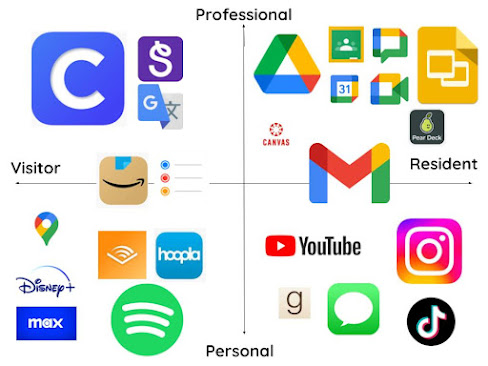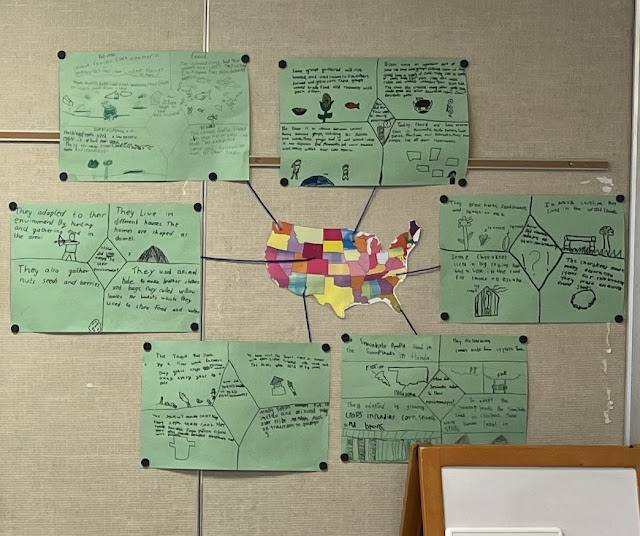The Tale of Both a Visitor and a Resident
The Tale of Both a Visitor and a Resident
In 2011, David White gave us the terminology of “Visitors and Residents.” This ideology became the new method in which users defined the manner in which they engaged with the internet. What I like about this ideology, is that is utilizes a spectrum for internet users to place themselves along based on their purpose or mission when using the internet, instead of thinking in the black and white terms of Marc Prensky’s “digital natives” and “digital immigrants.” I also found it fitting that David White’s spectrum differentiated internet use for professional and personal purposes. When analyzing my internet use using “Visitors and Residents” spectrum for my personal and professional use, I was initially surprised by the way in which the map of my digital space turned out.
 |
| Image property of the author |
When first starting my map, I assumed that all of the applications and sites I was including would be on the “Resident” side of the spectrum. Since I am confident in using and maneuvering through these sites and applications, I assumed that that qualified me as a “Resident.” After watching David White’s explanation of the concept, I quickly learned that my initial thoughts were misguided. Since I use many applications strictly as a tool to complete a task or as a means to an end, they belonged in the “Visitor” sections. A great example of this is Clever. Clever is a digital platform that my school district uses to house all of the applications staff and students need to access throughout the school year. I use it to access our math, science, social studies, and SEL curricula on a daily basis. My students also use the portal daily to access their reading apps, such as Epic! and PebbleGo.
An example of a means to an end use in a personal capacity would be Audible and Spotify. Similar to Clever, I am using these apps to achieve a specific goal, listen to a book or listen to music or a podcast. I am not creating anything that contributes to these applications, leaving them in the “Visitor” realm of my digital map.
With this newfound understanding of the true meaning of “Visitors and Residents,” it was easy for me to place sites and applications that I frequent into both the professional and personal quadrants on the “Resident” side of the spectrum. Professionally, I am constantly creating data on Google Drive and other Google Suite products. The same can be said for Gmail, which I use frequently in both a professional and personal capacity. I was also able to add applications and sites such as Instagram, YouTube, and TikTok to the personal “Resident” quadrant, as I have accounts on these sites that I use to actively contribute within the platforms.
A final observation that I noticed, was how my digital status changed throughout the day. On weekdays, I spend my mornings and afternoons strictly in the professional quadrants of my digital map. In the evenings, my internet use transitions to the personal quadrants. While this was not a shocking pattern, I did find it interesting how black and white my internet usage was. While many people can easily transition between the personal and professional realms during the workday, I realized that I am not one of those people. Perhaps it comes down to my personality or the demands of the class, but it was interesting to uncover a clear divide in my digital map.


Your map is evenly divided!
ReplyDeleteKaitlin,
ReplyDeleteYou posted some resources I totally forgot about! I incorporate Seesaw in my classroom, but Google Classroom is my primary platform for sharing information and assignments with my students. Your mention of your map transitioning from professional use during the day to personal use in the evening resonates with me. As I mapped out my digital space, I found a similar result. Balancing personal and professional spaces while at work can be challenging. The students are always on the move, leaving little downtime except for lunch and planning periods. My digital map also significantly changes during summer break as I don't rely on school resources as frequently. I'll be teaching summer school this year, which will likely impact how I typically engage with technology over the summer.